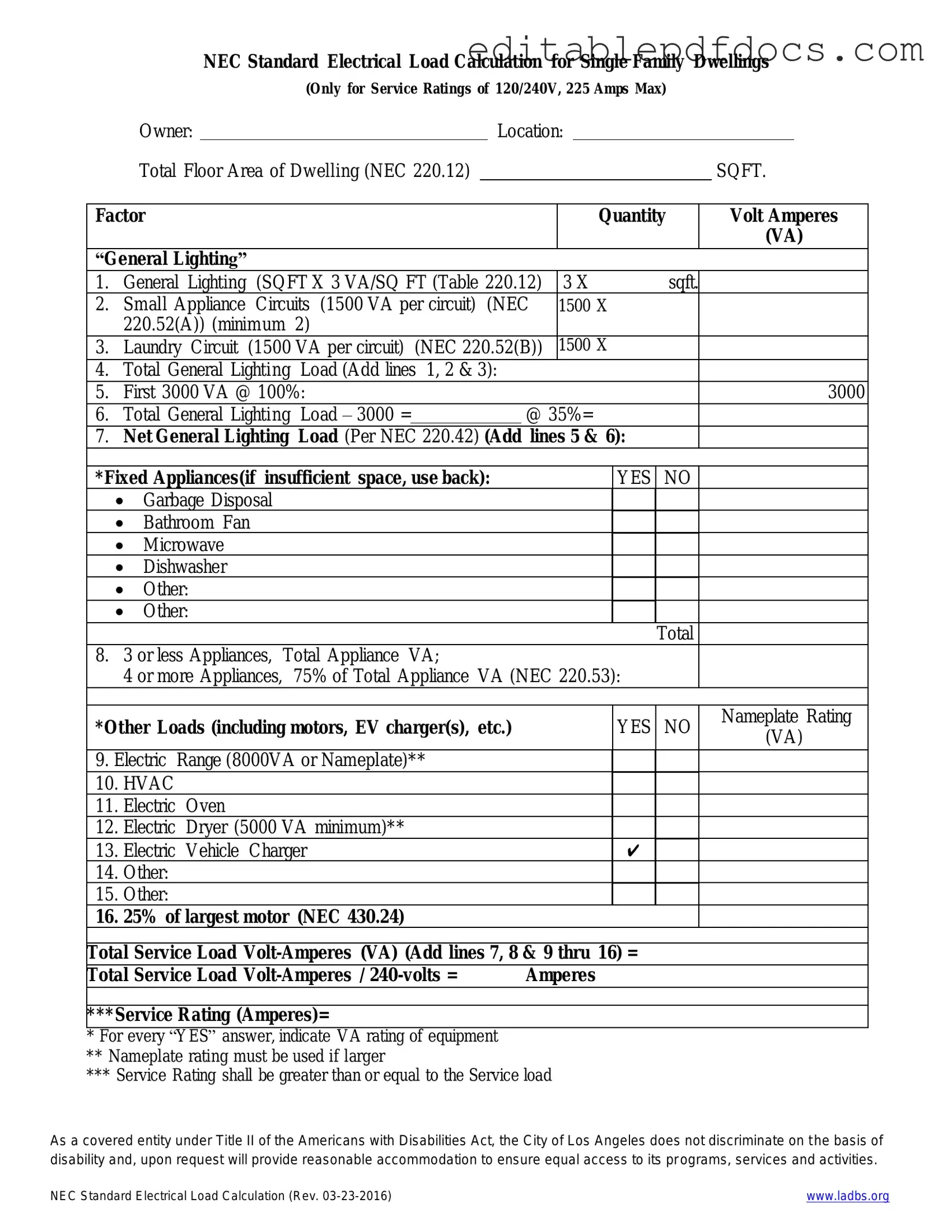Fill a Valid LADBS NEC Standard Electrical Load Calculation Template
The LADBS NEC Standard Electrical Load Calculation form is a crucial document used to determine the electrical load requirements for buildings in compliance with the National Electrical Code. This form ensures that electrical systems are designed safely and efficiently, meeting the needs of the occupants while adhering to regulatory standards. To streamline your project, take a moment to fill out the form by clicking the button below.
Open Editor Now
